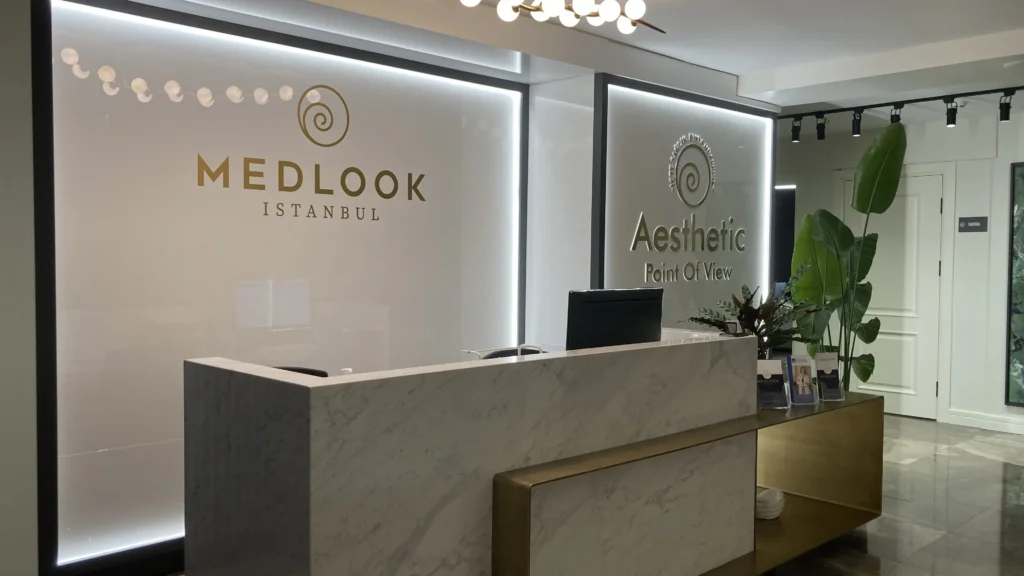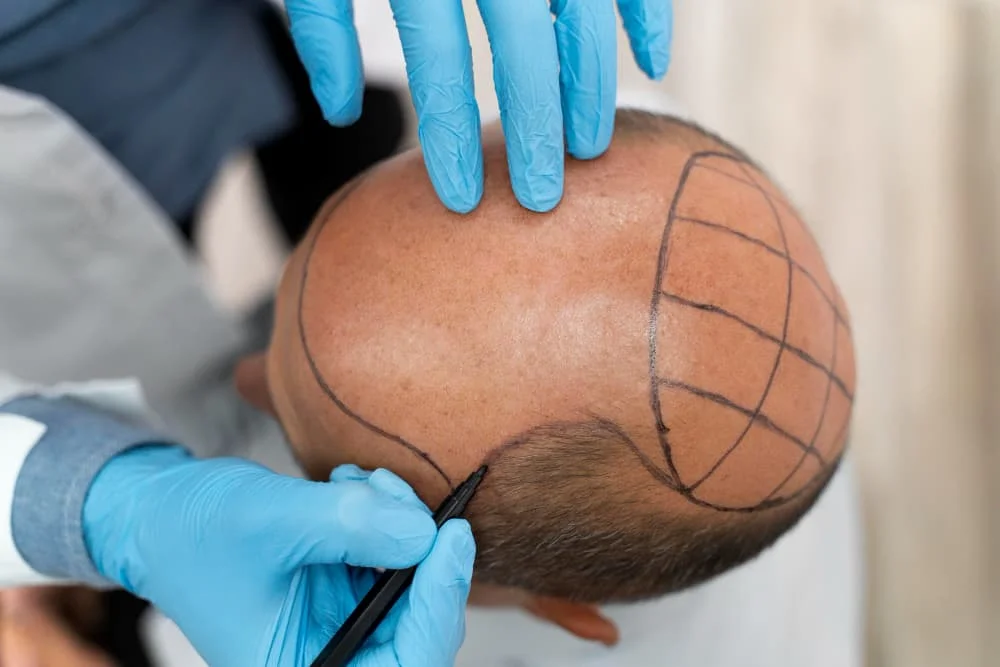
If you want to reduce fine lines, add more volume to your lips, or enhance your facial contours, dermal filler treatments can be a very popular and effective option. However, with so many different filler types and techniques available, making the right choice can sometimes feel overwhelming.
Choosing the right dermal filler is crucial to achieving your desired aesthetic results while ensuring a safe application. There are many factors to consider when making this decision, such as your age, skin type, target area, and the properties of the filler.
What Is a Dermal Filler?
Dermal fillers are gel-like substances injected under the skin to help eliminate wrinkles, fine lines and depressions on the face. This method is known for its rejuvenating and shaping effects on the face and is commonly preferred because it does not require surgery.
These fillers typically contain hyaluronic acid, a substance naturally found in our bodies. Hyaluronic acid adds moisture to the skin, increasing elasticity, and when applied under the skin, it provides fullness and smooths the skin surface, giving a younger appearance.
Key Considerations for Choosing the Right Filler
When opting for a filler, selecting the most suitable type for you is very important. Here are some key factors to consider during the selection process:
- Age: Plays a significant role in determining the right filler. At younger ages, lighter fillers might suffice to reduce fine lines and support skin elasticity, while at older ages, more voluminous fillers may be needed to counter significant volume loss.
- Skin type: Is another crucial factor influencing filler selection. For dry skin, fillers that provide more moisture are ideal, while for oily skin, lighter and more matte fillers are preferable.
- Target Area: Selecting the appropriate filler for the target area is essential. For instance, lip fillers are generally softer and more flexible, whereas fillers used for the cheeks or under-eye areas may vary.
- Properties of the Filler: The density and longevity of fillers also influence your decision. Denser fillers are suitable for deep wrinkles and significant volume loss, while thinner, more fluid fillers are better for surface fine lines and delicate areas like the lips. Additionally, fillers can be short-lasting or long-lasting—some may last a few months, while others can last two years or longer.
Consulting a doctor can help you choose the most suitable filler. Based on your age, skin type, the target area, and your goals, a doctor can guide you to the right filler for your needs.
Types of Dermal Fillers and Their Characteristics

Dermal fillers consist of various substances injected under the skin to add volume and reduce wrinkles. The characteristics and duration of effects vary among fillers, so it’s important to understand these differences to select the one that best suits you.
1. Hyaluronic Acid
Hyaluronic acid is a naturally occurring component in the body that plays a major role in maintaining skin hydration. Hyaluronic acid-based fillers are commonly used to reduce fine lines and wrinkles, add volume to the lips, and enhance facial contours. They usually remain effective for 6 to 18 months.
Advantages:
- Its natural composition means there is a low risk of allergic reactions.
- Provides instant results upon injection and offers a natural look.
- Can be reversed if necessary using the enzyme hyaluronidase, which completely dissolves the filler.
Disadvantages:
- The effect is temporary, and achieving sustained results requires repeat applications.
- Mild bruising or swelling may occur post-treatment.
2. Calcium Hydroxylapatite
Calcium hydroxylapatite is a mineral naturally found in bones and teeth. These fillers are often used to reduce deep wrinkles, add volume to the cheeks, and define facial contours. The effects typically last for 12 to 18 months.
Advantages:
- Safe due to its biological compatibility.
- Stimulates collagen production, helping the skin become firmer and appear younger.
- Provides longer-lasting results.
Disadvantages:
- More expensive compared to hyaluronic acid fillers.
- Mild swelling or bruising can occur post-application.
3. Poly-L-lactic Acid
Poly-L-lactic acid is a polymer that gradually dissolves in the body. This filler is used to restore lost volume, reduce deep wrinkles, and tighten the skin. Its effects can last for two years or longer.
Advantages:
- Contributes to skin rejuvenation by stimulating collagen production.
- Has a long-lasting effect.
Disadvantages:
- Higher cost compared to hyaluronic acid fillers.
- The effect is gradual, not immediate, and multiple sessions may be required.
- Mild bruising, redness, or swelling can occur after the procedure.
When selecting the best filler for yourself, consider these characteristics, advantages, and disadvantages. Moreover, consulting a dermatologist or plastic surgeon will help you determine the best filler based on your skin type, age, and personal goals.
Choosing the Right Filler for Different Areas of the Face
Facial filler applications aim to reduce the signs of aging in specific areas of the face and achieve a fuller, younger look. The type of filler used may vary depending on the characteristics of the target area and the desired outcome.
- Lips: To add volume to the lips and define their contour, hyaluronic acid-based fillers are commonly used. These fillers provide both volume and a natural shape to the lips.
- Cheeks: To address volume loss or add fullness to the cheek area, hyaluronic acid or calcium hydroxylapatite-based fillers are used. These fillers help define facial contours for a more youthful look.
- Under-Eye Area: To reduce hollowness and dark circles under the eyes, lighter and more fluid fillers are used. Hyaluronic acid-based fillers are ideal for this area, giving the skin a smoother and brighter appearance.
- Forehead: To treat wrinkles and lines on the forehead, hyaluronic acid or poly-L-lactic acid-based fillers can be used. These fillers help make the forehead appear smoother and younger.
- Chin: To define the chin and balance the facial oval, dense fillers are preferred. Calcium hydroxylapatite or poly-L-lactic acid-based fillers are commonly used for this area.
- Nose: Fillers used to make minor corrections to the shape of the nose provide aesthetic improvement without surgery. Hyaluronic acid-based fillers are typically used for this area.
Consulting with a doctor is essential for determining which filler material should be used in different areas of the face.
Dermal Filler Treatments at Istanbul Hair Institute

Istanbul Hair Institute offers the highest quality services to patients with its team of specialists and modern techniques, focusing on reducing the signs of aging on the face for a younger and more vibrant appearance.
- Expert Team: All filler procedures are performed by highly experienced and qualified doctors.
- High-Quality Fillers: Only clinically tested and reliable brands of fillers are used.
- Personalized Treatment Plan: Each patient receives a treatment plan tailored to their specific skin type and expectations.
- Safe and Comfortable Environment: All procedures are carried out in a hygienic and modern setting, ensuring a comfortable experience for patients.
If you would like to learn more about dermal filler applications and whether they are suitable for you, feel free to contact Istanbul Hair Institute.
Recent Posts
-
 Does Creatine Cause Hair Loss? Separating Fact from Fiction21 Jan 2025
Does Creatine Cause Hair Loss? Separating Fact from Fiction21 Jan 2025 -
 How Long Does Hair Transplant Last? A Comprehensive Guide to Long-Term Results15 Jan 2025
How Long Does Hair Transplant Last? A Comprehensive Guide to Long-Term Results15 Jan 2025 -
 Hair Loss After Hair Transplantation: Is It Normal and What to Do?13 Jan 2025
Hair Loss After Hair Transplantation: Is It Normal and What to Do?13 Jan 2025 -
 Donor Area in Hair Transplant: All You Need to Know - Istanbul Hair Institute06 Jan 2025
Donor Area in Hair Transplant: All You Need to Know - Istanbul Hair Institute06 Jan 2025 -
 The Connection Between Oral Health and Overall Health03 Jan 2025
The Connection Between Oral Health and Overall Health03 Jan 2025

